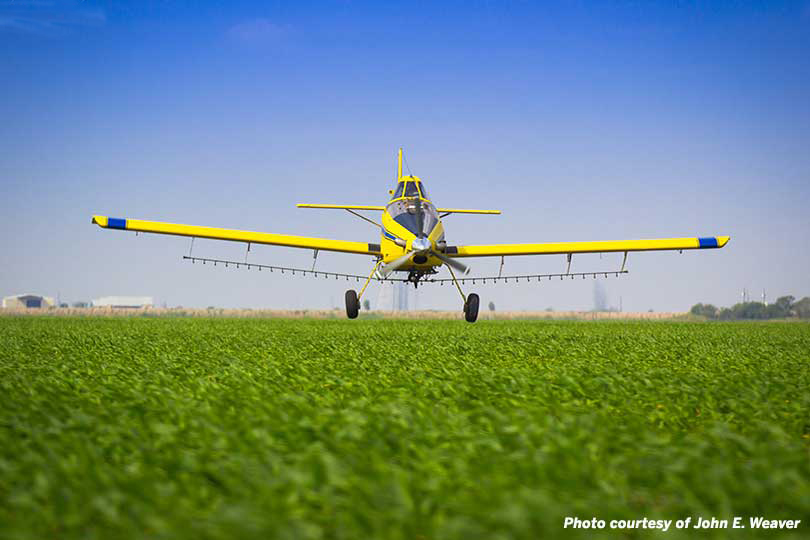By Julie Tomascik
Associate Editor
Yellow planes paint the blue skies as they fly over fields of vibrant crops. Agricultural aviation can be a dangerous business, but it’s a necessity for farmers and ranchers in the Lone Star State.
Flying low and fast, agricultural pilots spray local fields with herbicides, insecticides and fungicides. They’re another tool for farmers and ranchers dealing with diseases and insects.
But agricultural pilots are fighting their own battle—against guide wires and unmarked towers.
“Wind, cellular and other types of businesses that erect these low level towers count the cost of marking these towers in dollars,” Clyde Kornegay, San Benito County Farm Bureau member and agricultural pilot, told the Texas Farm Bureau Radio Network. “In the ag aviation industry, the cost is counted in human lives. We’re highly skilled professionals and we undergo constant continuing education, but all the training and skill cannot stop an unmarked tower or guide wire from ending a life.”
Kornegay, who’s been an agricultural pilot for the past 12 years, says situations can escalate quickly at the low altitudes.
“The majority of the speeds that we’re dealing with are working speeds usually around 160 miles per hour,” he said. “There’s a lot of obstacles and a lot of issues, and of course, we’re always watching for people and all kinds of other things.”
It’s a busy place at that level, and the concentration can be exhausting. Agricultural pilots must be skilled aviators, understand chemistry and have a knowledge of local crops and farming practices.
“Being an ag pilot is very much more involved than just being a pilot. You have to know about the dispersal systems on the airplane. You have to know about the people in your area—both your customers as well as populated areas, organic farms and greenhouses,” Kornegay said.
Just as agriculture has changed, so has the aviation industry.
“At one time, the ag aviation industry was made up of aircraft that had been repurposed for ag, whereas now the airplanes that we are using—every ag airplane that you see—is a specially built aircraft specifically for crop protection,” he said.
The latest technologies in both guidance systems and air frames and engines help agricultural pilots do their job—protecting crops from disease and insect damage.

